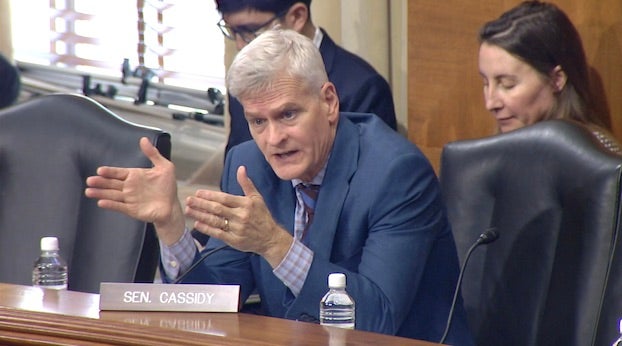Vessels, industries pay no fees to use channel
Published 6:00 pm Sunday, April 29, 2018

{{tncms-inline alignment=”left” content=”<p><span class="s1">The I</span><span class="s2">nformer answers questions from readers each Sunday, Monday and Wednesday. It is re</span>searched and written by&nbsp;<strong>Andrew Perzo</strong>, an&nbsp;<em>American Press</em>&nbsp;staff writer. To ask a question, call 494-4098 and leave voice mail, or ema<span class="s2">il informer@americanpress.com.</span></p>” id=”82174fc3-8253-4566-931b-82cbeb315d3e” style-type=”info” title=”THE INFORMER” type=”relcontent” width=”half”}}
Do the industries here and the companies around the world pay any fees to use the Calcasieu Ship Channel?
“There are not any user fees dedicated for use of the channel by any industries, group or vessels whether local or internationally,” Bill Rase, Port of Lake Charles executive director, wrote in an email.
“Industries and local homeowners that are within the boundaries of the Lake Charles Harbor and Terminal District pay an ad valorem, or property, tax to the port. This amounts to approximately $3.5 million annually.”
The district encompasses Lake Charles and areas to the south of the city, along with Westlake and the easternmost part of Sulphur. According to the port’s latest financial review, the district in 2016 collected $2.93 million in tax proceeds, or about 81 percent of the total levy, $3.6 million.
Rase said the port has “over the past several years” spent “a considerable portion” of operating funds on the ship channel — expenditures, he said, that the port isn’t legally obligated to make.
“The fact is that the state of Louisiana is the responsible party for funding the channel at this time, not the port,” Rase wrote.
Online: www.portlc.com.
No law says drivers must stop for city bus
If you’re following a city transit bus that stops to load or unload passengers, do the same safety laws apply as if it were a school bus?
No, but drivers should take care when passing stopped transit buses on four-laned roads.
As for school buses, state law says motorists must halt within 30 feet of those that stop to pick up or drop off children along undivided roads — i.e., those without central medians, barriers, ditches or two-way turn lanes.
“You do not have to stop when the bus is stopped in a loading zone completely off the roadway and where the pedestrians are not allowed to cross the roadway. …,” the state’s Class E driver’s guide.
“Drivers must stop for a stopped school bus when traveling on four lane or five lane roadways which are not separated by any barriers. When you have stopped, you must not proceed until the bus moves again or the visual warning signals are no longer in use.”
Online: www.expresslane.org.
Water will condense from air at dew point
What is the correlation between the dew point and the relative humidity?
From a National Weather Service website:
“The dew point is the temperature the air needs to be cooled to (at constant pressure) in order to achieve a relative humidity (RH) of 100%. At this point the air cannot hold anymore water in the gas form. If the air were to be cooled even more, water vapor would have to come out of the atmosphere in the liquid form, usually as fog or precipitation.
“The higher the dew point rises, the greater the amount of moisture in the air. This directly effects how ‘comfortable’ it will feel outside. … So if you want a real judge of just how ‘dry’ or ‘humid’ it will feel outside, look at the dew point instead of the RH. The higher the dew point, the muggier it will feel.”
Online: www.weather.gov.
The Informer answers questions from readers each Sunday, Monday and Wednesday. It is researched and written by Andrew Perzo, an American Press staff writer. To ask a question, call 494-4098 and leave voice mail, or email informer@americanpress.com.






